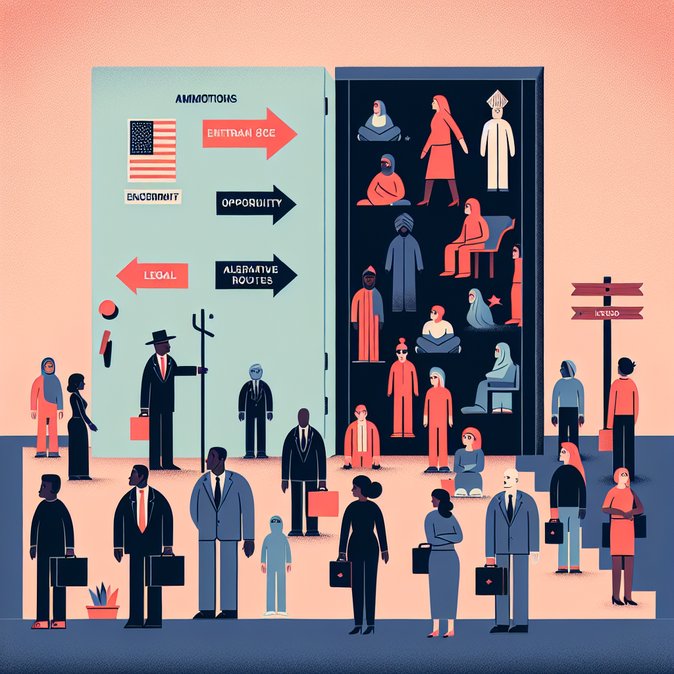
In a stunning reversal of decades-old U.S. humanitarian policy, President Donald Trump on 30 October set the fiscal-year 2026 refugee-admissions ceiling at just 7,500, down from 125,000 under the previous administration. The accompanying Presidential Determination and Federal Register notice specify that the “overwhelming majority” of slots are reserved for white South African (Afrikaner) applicants, whom the administration says face discrimination and farm violence at home.
The decision effectively shuts the door on most other refugee populations, including Afghans who assisted U.S. forces, Syrians displaced by civil war, and Ukrainians fleeing the ongoing conflict. Advocacy groups such as Global Refuge and HIAS condemned the move as an “abdication of moral leadership” and warned of cascading effects on U.S. diplomatic credibility.
For corporations, the refugee program has been a niche but reliable talent pipeline—particularly in food-processing, logistics and health-care sectors that partner with resettlement agencies. With the cap set at its lowest level since the 1980 Refugee Act, employers should anticipate even tighter labor markets in certain regions. States like North Carolina and Iowa, which have leveraged refugee resettlement to fill manufacturing jobs, may need to expand H-2B or parole programs instead.
The Administration argues the cut is necessary to focus resources on vetting and to prioritize groups that allegedly integrate more quickly. Critics counter that singling out one ethnic group violates the Refugee Act’s non-discrimination clause and will spur legal challenges. Congress can override the cap by legislation, but similar attempts in recent years have failed.
Companies engaged in corporate social-responsibility initiatives around refugee hiring are reassessing 2026 recruitment goals. Some are pivoting to humanitarian parole or private sponsorship pathways, though those programs have annual caps and higher compliance burdens. Immigration counsel urge employers to monitor court challenges and to diversify workforce-planning strategies in anticipation of a prolonged reduction in refugee arrivals.
The decision effectively shuts the door on most other refugee populations, including Afghans who assisted U.S. forces, Syrians displaced by civil war, and Ukrainians fleeing the ongoing conflict. Advocacy groups such as Global Refuge and HIAS condemned the move as an “abdication of moral leadership” and warned of cascading effects on U.S. diplomatic credibility.
For corporations, the refugee program has been a niche but reliable talent pipeline—particularly in food-processing, logistics and health-care sectors that partner with resettlement agencies. With the cap set at its lowest level since the 1980 Refugee Act, employers should anticipate even tighter labor markets in certain regions. States like North Carolina and Iowa, which have leveraged refugee resettlement to fill manufacturing jobs, may need to expand H-2B or parole programs instead.
The Administration argues the cut is necessary to focus resources on vetting and to prioritize groups that allegedly integrate more quickly. Critics counter that singling out one ethnic group violates the Refugee Act’s non-discrimination clause and will spur legal challenges. Congress can override the cap by legislation, but similar attempts in recent years have failed.
Companies engaged in corporate social-responsibility initiatives around refugee hiring are reassessing 2026 recruitment goals. Some are pivoting to humanitarian parole or private sponsorship pathways, though those programs have annual caps and higher compliance burdens. Immigration counsel urge employers to monitor court challenges and to diversify workforce-planning strategies in anticipation of a prolonged reduction in refugee arrivals.








